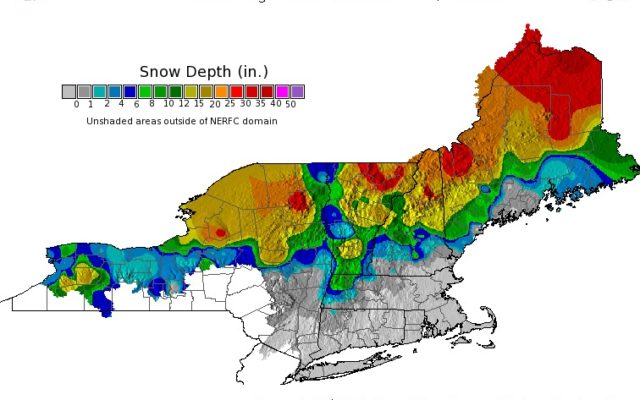
This Maine snowpack map can help you plan winter adventures
As winter slowly winds down in Maine, giving way to mud season, it can be a challenge to plan outdoor adventures. Throughout the state, snow depth can vary drastically from the coast to inland mountains, dictating whether you can ski, snowmobile, snowshoe, ice skate, bike or hike on solid ground.
One tool that may help you plan outings during this time of year is the online snow depth map updated daily by the National Weather Service at weather.gov/nerfc/snow. The map shows how deep the snow cover is throughout the state, which can help you decide what outdoor activities are possible at different outdoor destinations.
Here’s how the map works.
Each morning at 7 a.m., meteorologists and a network of volunteer observers measure and report snow depths throughout Maine to the National Weather Service.
“Most of them are volunteers — all over the state,” said Tim Duda, meteorologist with the National Weather Service in Caribou. “We also report our own official measurements. Here at our station [in Caribou], we have a set of four snow stakes out around the property here. We go out and check each of those states and that’s how we derive an average snow depth.”
The data is used to generate daily maps, in which snow depths are represented by various colors.
The March 1 snow depth map, for example, showed snow cover as deep as 25 inches in upper Aroostook County and in Maine’s western mountains. In sharp contrast, the map reported bare ground to 4 inches of snow along Maine’s southern coastline.
“It’s not unusual to have a higher snow depth across the north [part of Maine] and in the mountains,” Duda said. “But of course it’ll vary and depends on the year.”
The snow depth map is a good place to start, but it’s not your only resource for the information. You can also call town offices, land trusts, park rangers and trail maintainers to learn more about snow and ice conditions before traveling to an outdoor destination. Doing a little legwork before hitting the road could save you the frustration of showing up with the wrong gear or the wrong activity in mind.
Also, before you cancel plans, remember that some outdoor destinations make their own snow. For instance, ski mountains use snow machines to keep their runs covered. Plus, shady forests and higher elevations also tend to have deeper snow cover.